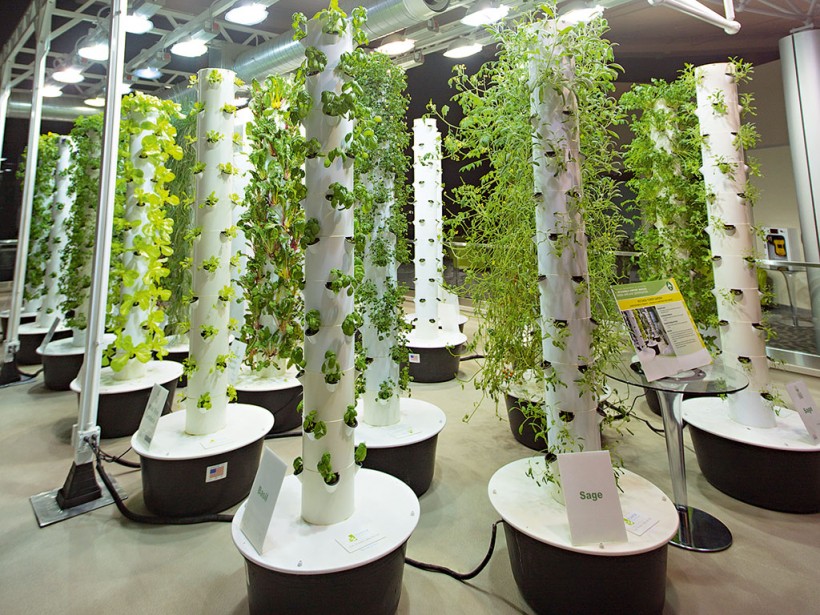With global populations rising and arable land decreasing, the demand for innovative agricultural solutions has never been greater. Vertical farming has emerged as a revolutionary method to grow food efficiently, using minimal land and water while producing high yields.
This innovative approach to farming is not only transforming urban agriculture but also holds promise for rural areas where traditional farming faces challenges like water scarcity, climate variability, and soil degradation.
This article explores the concept of vertical farming, its advantages, technologies, applications in urban and rural settings, and its potential to address pressing food security issues.
1. What is Vertical Farming?
Vertical farming is a technique where crops are grown in stacked layers, often integrated into controlled-environment agriculture (CEA) systems. These farms use technologies like hydroponics, aeroponics, and aquaponics to grow crops without soil, often indoors or in specially designed structures.
Key Features of Vertical Farming:
Efficient use of vertical space.
Controlled light, temperature, and humidity.
Reduced water usage compared to traditional farming.
Year-round crop production regardless of external weather conditions.
2. Technologies Used in Vertical Farming
2.1. Hydroponics
Plants are grown in nutrient-rich water solutions instead of soil. This method minimizes water usage and maximizes nutrient uptake.
2.2. Aeroponics
Plants are suspended in air, and their roots are misted with nutrient solutions. Aeroponics uses even less water than hydroponics and promotes faster growth.
2.3. Aquaponics
Combines fish farming with hydroponics, creating a symbiotic environment where fish waste provides nutrients for plants, and plants purify the water for fish.
2.4. LED Lighting Systems
LED lights mimic sunlight and can be customized to optimize plant growth. These lights are energy-efficient and essential for indoor farming.
2.5. Automation and AI
Modern vertical farms use automation to monitor and control growth conditions. Artificial Intelligence (AI) enhances crop yield predictions and detects plant diseases.
3. Advantages of Vertical Farming
3.1. Space Efficiency
By growing crops vertically, farmers can produce more food per square meter, making it ideal for cities with limited land.
3.2. Water Conservation
Vertical farms use up to 90% less water than traditional agriculture, a critical advantage in water-scarce regions like Rajasthan.
3.3. Reduced Environmental Impact
Eliminates the need for pesticides and herbicides.
Reduces the carbon footprint by producing food closer to urban centers.
3.4. Consistent and High Yields
Controlled environments allow year-round production, immune to external weather changes.
3.5. Employment Generation
The technology-intensive nature of vertical farming creates new jobs in engineering, operations, and research.
4. Applications in Urban Agriculture
4.1. Rooftop Vertical Farms
Urban areas can transform unused rooftops into productive spaces for growing vegetables and herbs.
4.2. Skyscraper Farms
Cities like Singapore and Tokyo are pioneering skyscraper farms, integrating food production into high-rise buildings.
4.3. Local Food Supply
Vertical farms reduce the need for long supply chains by producing fresh food directly in cities, cutting down on transportation costs and emissions.
5. Applications in Rural Agriculture
5.1. Tackling Water Scarcity
Rural areas in arid regions like Rajasthan can benefit from vertical farming’s low water requirements.
5.2. Addressing Soil Degradation
With soil-free techniques like hydroponics, farmers in regions with poor soil quality can still grow high-yield crops.
5.3. Empowering Small-Scale Farmers
Vertical farming systems can be modular and scalable, enabling small farmers to adopt technology at a pace that suits them.
5.4. Enhancing Food Security
Rural vertical farms can grow diverse crops locally, reducing dependency on external food supplies.
6. Challenges in Vertical Farming
6.1. High Initial Costs
Setting up vertical farming systems requires significant investment in technology, infrastructure, and training.
6.2. Energy Consumption
LED lighting and climate control systems can lead to high energy usage, though renewable energy sources are addressing this issue.
6.3. Limited Crop Variety
Currently, vertical farming is best suited for fast-growing, high-value crops like leafy greens, herbs, and strawberries, while staples like wheat and rice are harder to grow.
6.4. Knowledge Gap
Farmers in rural areas may lack the technical expertise needed to operate and maintain vertical farming systems.
7. Successful Examples of Vertical Farming
7.1. AeroFarms (USA)
AeroFarms operates some of the largest indoor vertical farms in the world, producing leafy greens efficiently and sustainably.
7.2. Sky Greens (Singapore)
Sky Greens uses vertical towers to grow vegetables, saving space and water in the densely populated city-state.
7.3. Sahara Forest Project (Middle East)
This initiative combines vertical farming with renewable energy and desalination to grow crops in desert environments.
7.4. Jaipur's Pilot Vertical Farms (India)
A recent pilot project in Jaipur demonstrated the feasibility of vertical farming in arid conditions, paving the way for broader adoption in Rajasthan.
8. Future of Vertical Farming in Urban and Rural Areas
8.1. Integration with Renewable Energy
Solar-powered vertical farms will reduce operational costs and make them more accessible for rural areas.
8.2. Expansion of Crop Varieties
Ongoing research aims to adapt vertical farming techniques for grains, tubers, and other staple crops.
8.3. Decentralized Farming Models
Vertical farming could empower communities to produce food locally, reducing reliance on centralized agriculture.
8.4. Government Support
Policies and subsidies can encourage more widespread adoption of vertical farming, particularly in developing countries.
9. Vertical Farming in Rajasthan: A Case for Adoption
Rajasthan, with its arid climate and growing water scarcity, stands to benefit immensely from vertical farming.
Urban Areas: Cities like Jaipur and Udaipur can establish vertical farms to supply fresh produce locally.
Rural Areas: Small-scale vertical farming systems can transform livelihoods in water-stressed regions like Barmer and Jaisalmer.
Prakriti Kalyan Foundation is committed to promoting sustainable agricultural practices.
Conclusion
Vertical farming offers a sustainable and innovative solution to the challenges of modern agriculture. By utilizing technology to grow food efficiently, this method holds immense potential for both urban and rural areas. While there are challenges to overcome, the integration of renewable energy, community involvement, and supportive policies can drive the adoption of vertical farming across India and beyond.
With initiatives like those of the Prakriti Kalyan Foundation, the future of agriculture can be reimagined to ensure a greener and more food-secure world.

.png)

.png)
.png)


.png)
.png)
.png)
.png)

0 Comments